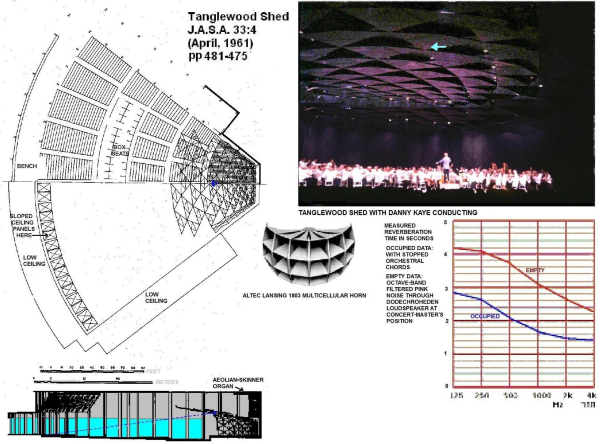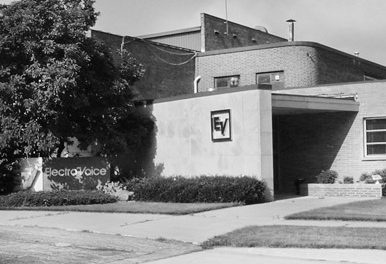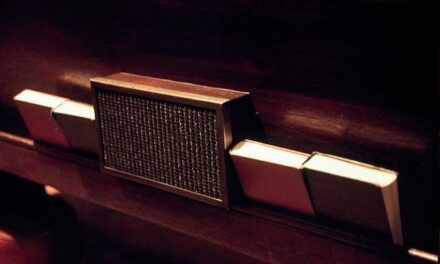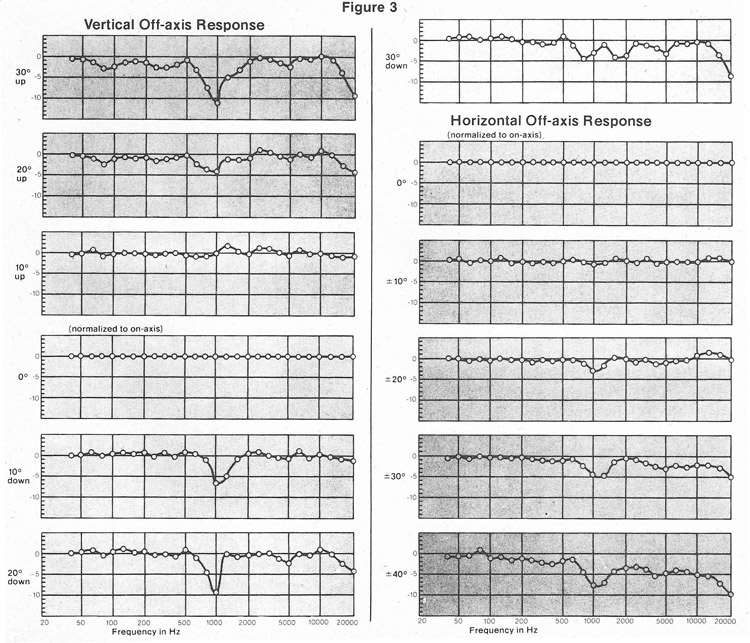Editor’s Note: This is an important piece of audio history presented by noted acoustical consultant David Klepper. The main topic is the 1960 development and application of an early feedback suppressor, known as a “frequency shifter,” by Manfred Schroeder at Bell Labs. Klepper recalls an on-train discussion with Schroeder as including digital audio, which Bell Labs was implementing in telephony at the time. Schroeder’s frequency shifter was the first use of a digital audio device with analog-to-digital conversion at the input and digital-to-analog conversion at the output. However, the frequency shifter application initially used analog technology. Klepper also mentions his own work with Doug Steele at MIT in creating and applying line-source column loudspeakers using simple acoustical techniques.
Manfred Schroeder’s Frequency Shifter for feedback reduction or elimination, 1960, and its first use at the Tanglewood Music Shed, Lenox, Massachusetts – A non-technical bit of history.
David Lloyd Klepper
Yeshivat Beit Orot, Shmuel ben Adiya 1, Mt. of Olives, Jerusalem 97400, Israel ddaveklepper1@gmail.com
A chance meeting in a railroad lounge car
Both Dr. Schroeder and I attended the Spring 1960 Cincinnati Acoustical Society convention, and both opted for a relaxing railroad return instead of flying. And both of us wished to get the best possible view of Horseshoe Curve, navigated by the Pennsylvania Railroad’s eastbound Cincinnati Limited before its Altoona, Pennsylvania, station stop. So we both arrived at the snack-and-lounge car at about the same time to enjoy the multiple wide windows to view what still is a beautiful harmony of human effort and natural wonder. We found a free table on the right and settled down to enjoy the views.
I was not content to let an opportunity to “talk shop” with one of the great minds of acoustics slip by. I presented the idea of using PF-105 Fiberglass to attenuate the outer, the upper and lower loudspeakers’ high-frequencies in a simple many-loudspeaker line-source array, keeping the effective line-length proportional to the wave-length across the speech-frequency range. This was an idea I was working on with Doug Steele at MIT and first applied by him in the sound system he installed at Boston’s Tremont Temple, where he held membership, as a straightforward central speech-reinforcement system.1 Later applications included the distributed column loudspeaker systems in the chapels of the University of Chicago and Duke. Dr. Schroeder thought well of the idea. It has been superseded by variable-pattern line-source and array loudspeakers with coverage patterns under computer control.
Then, Dr. Schroeder brought up the idea that the latest in telephone signal-processing technology can shift the frequency spectrum of any complex signal, including speech, and that this technology could interrupt a feedback loop, permitting more gain in a sound-reinforcement system before ringing and feedback. I exclaimed that I thought the idea was marvelous and most useful. He promised to send me, at Bolt, Beranek and Newman, a Bell Laboratories prototype for testing.
The Prototype Frequency Shifter
A few months later, July or early August, the small package from Bell Laboratories arrived on my desk.
Opening it, I found a small black metal box, about 80mm x 80mm x 35mm, with input and output connectors, an on-off switch, and four screws on the bottom, which when unscrewed, allowed the bottom to be removed, revealing a pen-light-battery holder with battery. With Bill Cavanaugh’s approval and Martin Gardiner’s help, some preliminary tests were run with at-hand portable loudspeakers, an amplifier, microphone, and tape recorder for music playback. Results:
1. Depending on location and orientation of loudspeaker and microphone, gain-before feedback was improved between six and ten deciBels,
2. Onset of feedback, the marginal condition, was heard as a chirp, not tonal ringing.
3. The signal sounded fine on speech. Harsh and unusable on music. Measured frequency response satisfactory.
4. The shift appeared to be +1.5 Hz. My memory may be at fault on this, or the device was simply different than the one in published papers.2, 3
5. Unsure if my memory is correct, but I think the on-off switch was multi-pole and effected a direct input-to-output connection in the off position.
Danny Kaye’s conducting the Boston Pops Orchestra at Tanglewood presents a challenge
About the time we ran the first tests on the Bell Labs frequency shifter, Dr. Leo L. Beranek was contacted by the Boston Symphony management about the concert to take place in a few days by the Boston Pops Orchestra, normally conducted then by Arthur Fiedler, but this time Danny Kaye, and Danny Kaye wished to speak to the audience. Danny had conducted the Boston Symphony Orchestra the previous summer, and the system used then was not considered satisfactory.
The new system had to meet the following requirements:
1. Intelligibility in all interior seats, with coverage of the lawn areas not essential.
2. Recognizable voice, decent quality, but not necessarily broad-band high-fidelity.
3. Loudspeaker system out-of-the-way when not required for concert, with the orchestra concerned that the reputation that electronic-reinforcement for music was never used at Tanglewood be protected.
4. A very tough time schedule, with design, ordering equipment, delivery to site, installation, check-out, and rehearsal, all in few days.
Dr. Beranek assigned the project to me, and told me to start work immediately and give it highest priority.
System Design and Equipment Procurement
I had considerable success up to this challenge with the use of Altec Multicellular horns for this type of requirement, starting with the First Methodist Church of Westfield, New Jersey. Indeed, the Compton Laboratory Auditorium at MIT may still have a similar system, over 50-years old, still working today. Francis Wiener was my main teacher in the application of this family of efficient directional loudspeakers. His data indicated that an 1803 horn could provide 180 by 75-degree coverage, and graphical analysis indicated good results were possible, with the Shed’s acoustical design (post-1959 remodeling) helping with intelligibility-aiding early reflections.4 From Figure 1, one can evaluate the importance of added protection from feedback, considering the proximity of the microphone to the loudspeaker as compared to the distance to the furthest seats covered.
The rest of the system was simple. Only one microphone, a simple preamplifier, a splitter-isolation circuit to send a signal to the radio-pickup control console, a balanced-line 600-ohm attenuator control box located at one of the box seats, a frequency-response modification circuit of resistors, capacitors, and one inductor at the input of a 50-watt power amplifier, with the circuit rolling-off bass energy below 350Hz and more gradually boosting treble energy above 2000Hz. A rope-and-pulley system would raise the 1803 horn, with its throat and 290 driver, above the suspended panel array when speech reinforcement was not required, as well allowing some vertical-angle adjustment. Use of a limiter-compressor was avoided in favor of heads-up listening adjustment at a box seat.
The audio equipment was ordered from Lake Systems of Brookline, Boston, the Boston Altec dealer, a local hardware store, and DeMambro Radio Supply. We were informed the audio equipment would arrive by air-freight the morning of the afternoon rehearsal and evening concert.
A police motorcycle escort
The small electronic pieces were delivered by DeMambro to BBN the day after ordering. The Tanglewood staff took responsibility for having the pulley-and-rope system on hand for installation upon arrival of the audio equipment.
The next morning I drove from BBN to Lake Systems with hardware and small electronic pieces, planning to put the big Altec 1803 horn in the car’s trunk and the rest of the equipment on the back seat. I had checked that the trunk (1954 Ford two-door Mainline) was large enough for the 1803. But the shipment from Anaheim, California had not arrived before I arrived. Nervous waiting led to a quick loading when the equipment arrived.
Somewhere west of the Massachusetts Turnpike’s Route 128 interchange, a State Police officer pulled me over for exceeding the speed limit by 10 mph. I explained the purpose of the trip, the rehearsal schedule, and showed him the horn in the trunk. He told me to wait, and two Motorcycle Police showed up to accompany me directly to the Tanglewood Main Gate, at whatever speeds I decided were safe.
Success
The installation, with help from the Tanglewood staff, WCRB, and WGBH went well, the rehearsal also went well, and the concert was a complete success. Several manufacturers licensed the technology from Bell Laboratories for commercial products. Conversion to digital processing soon followed.
The simple Tanglewood speech reinforcement system was replaced by a manufacturer’s-donated, wide-band system, capable of meeting demands of popular touring music ensembles. This, in-turn was replaced by an optimum system designed by Acentech, successor to BBN, which provides unobtrusive and realistic music coverage of the lawn areas, as well as intelligible speech reinforcement throughout.
The prototype device was returned to Bolt, Beranek and Newman at the summer’s end. It was used late that Autumn at the Lawrenceville Academy Field-house, Lawrenceville, NJ, for an Esso Stockholders meeting with 8-inch cone-type loudspeakers in 0.12-cubic-meter wood boxes (Figure 2), but most probably stayed with the Tanglewood system after the 1961 season. I’m interested in knowing its current location.
David Griesinger, at Lexicon, solved the Frequency Shifter’s music problem by having the shift continually transition at an optimum rate between +1.5 and -1.5 Hz and back.
References and Notes
1) David L. Klepper and Douglass Steele, “Constant Directional from a Line-Source Array,” Journal of the Audio Engineering Society, July 1963, also the Anthology, Sound Reinforcement, p D-21-25, Audio Engineering Society, New York, NY 1978.
2) Manfred R. Schroeder, “Improvement of Feedback Stability of Public Address Systems by Frequency Shifting,” Journal of the Audio Engineering Society, April 1962, also in the Anthology, Sound Reinforcement. p. B-4-5
3) Anthony J. Prestigiacomo and D. J. McLean, “A Frequency Shifter for Improving Acoustic Feedback Stability,” Journal of the Audio Engineering Society, April 1962, also in the Anthology, Sound Reinforcement, p. B-6-9
4) F. Russell Johnson, Leo L. Beranek, Robert B. Newman, Richard H. Bolt, David L. Klepper, “Orchestra Enclosure and Canopy for the Tanglewood Music Shed,” J. Acoustical Society of America, 33:4, July 1961, p. 475-481

Figure 1. Tanglewood Music Shed4 and its 1960 – 1971 Speech Reinforcement System The blue arrow shows the location of the loudspeaker and its proximity to the microphone.

Figure 2. The 1960 Esso Stockholders’ Meeting at the Lawrenceville Academy Fieldhouse
About the Author
David Lloyd Klepper is currently a student of Rabbinics at Yeshivat Beit Orot, Jerusalem, Israel, having moved to Israel in 1996 from his position as President of Klepper Marshall King, White Plains, NY, Acoustical Consultants, and as Adjunct Professor of Architectural Acoustics at City University, New York City. Before 1971 he was a senior consultant at Bolt Beranek and Newman, starting his consulting career there in May 1957. He received his SM and SB degrees in Electrical Engineering from MIT, and between times served as Assistant Audio-Radio Member of the PsyWar Board at Fort Bragg, NC, during the Korean conflict, leaving active duty as a 1st Lt. He provided acoustical advice for over 200 worship space buildings, including the National Presbyterian Church, Washington, DC, St. Thomas Church Fifth Avenue, New York City, the Capetown, South Africa, Anglican Cathedral, River Road Baptist Church, Richmond, Virginia, Young Israel of Southfield, Michigan, and Boston’s Holy Cross Cathedral. In this capacity, he was a pioneer in application of digital delay and electronic simulation of reverberation in worship spaces, and pew-back speech reinforcement. Publications include 40 papers in professional journals, a coauthor with Professor Kleiner and Father Rendell Torris of the book Worship Space Acoustics, JRosspub.com., and Editor of the two Sound Reinforcement Anthologies of the Audio Engineering Society. He is a fellow of both the Acoustical Society of America and the Audio Engineering Society, past Emeritus Board Certified member of the Institute of Noise Control Engineering, and a member of both the American Guild of Organists and the Organ Historical Society. He also belongs to a number of railroad and public transit interest organizations. You may contact Klepper at ddaveklepper1@gmail.com.




